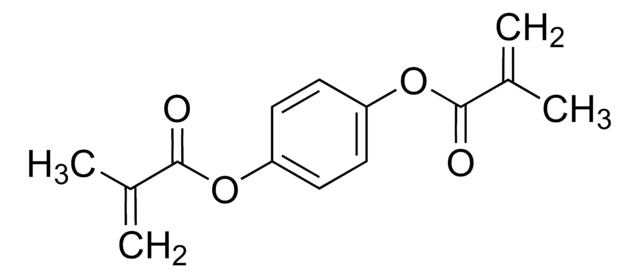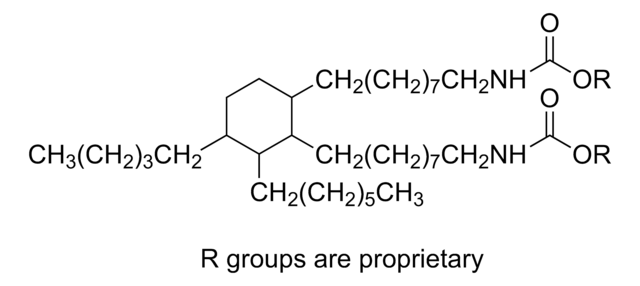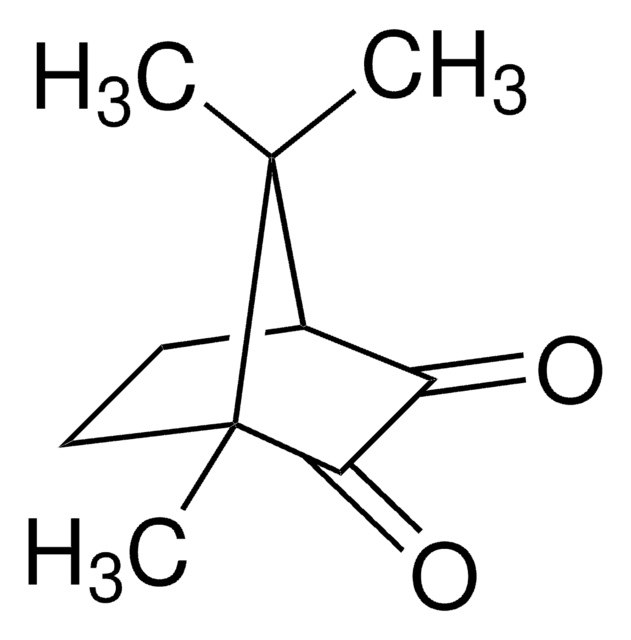411167
Bisphenol A glycerolate (1 glycerol/phenol) diacrylate
contains MEHQ as inhibitor
Synonyme(s) :
2,2-Bis[4-(3-acryloyloxy-2-hydroxypropoxy)phenyl]propane, 2,2-Bis[acryloyloxy(2′-hydroxypropyloxy)phenyl]propane, Bisphenol A glycerolate diacrylate
About This Item
Produits recommandés
Contient
MEHQ as inhibitor
250-500 ppm MEHQ as inhibitor
Indice de réfraction
n20/D 1.557 (lit.)
Viscosité
2000-4000 cP(65 °C)(lit.)
Indice d'acide
<5 mg KOH/g
Densité
1.18 g/mL at 25 °C (lit.)
Chaîne SMILES
CC(C)(c1ccc(OCC(O)COC(=O)C=C)cc1)c2ccc(OCC(O)COC(=O)C=C)cc2
InChI
1S/C27H32O8/c1-5-25(30)34-17-21(28)15-32-23-11-7-19(8-12-23)27(3,4)20-9-13-24(14-10-20)33-16-22(29)18-35-26(31)6-2/h5-14,21-22,28-29H,1-2,15-18H2,3-4H3
Clé InChI
VZTQQYMRXDUHDO-UHFFFAOYSA-N
Catégories apparentées
Application
Caractéristiques et avantages
Forme physique
Mention d'avertissement
Warning
Mentions de danger
Conseils de prudence
Classification des risques
Skin Sens. 1
Code de la classe de stockage
10 - Combustible liquids
Classe de danger pour l'eau (WGK)
WGK 3
Point d'éclair (°F)
235.4 °F - closed cup
Point d'éclair (°C)
113 °C - closed cup
Équipement de protection individuelle
Eyeshields, Faceshields, Gloves, type ABEK (EN14387) respirator filter
Faites votre choix parmi les versions les plus récentes :
Déjà en possession de ce produit ?
Retrouvez la documentation relative aux produits que vous avez récemment achetés dans la Bibliothèque de documents.
Les clients ont également consulté
Notre équipe de scientifiques dispose d'une expérience dans tous les secteurs de la recherche, notamment en sciences de la vie, science des matériaux, synthèse chimique, chromatographie, analyse et dans de nombreux autres domaines..
Contacter notre Service technique










